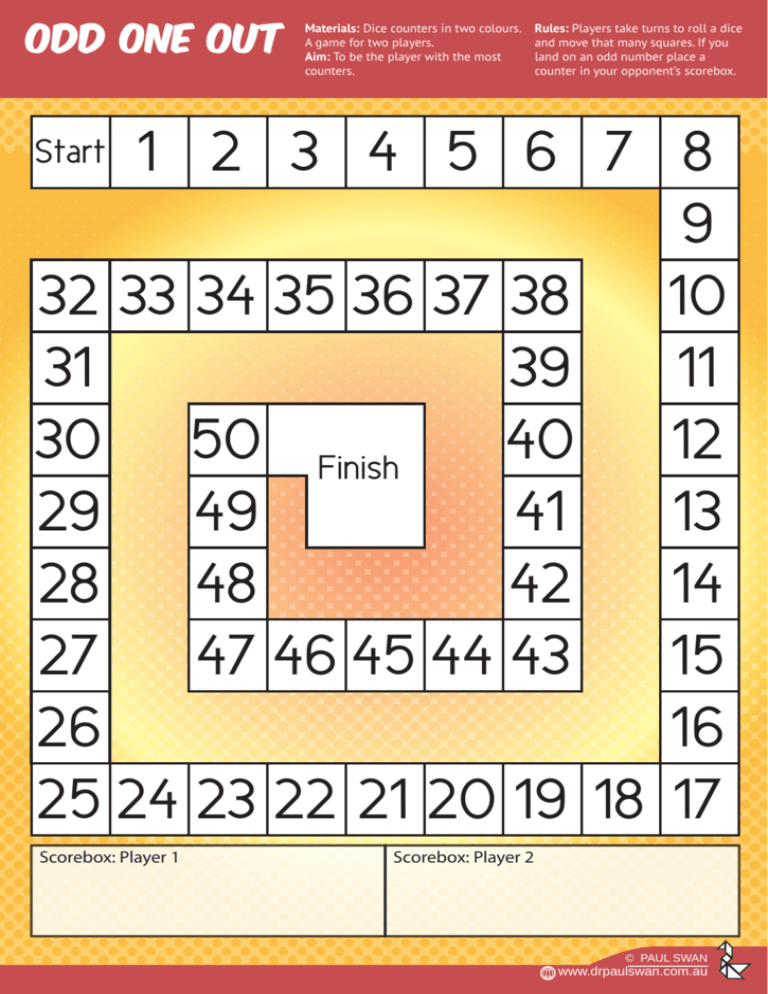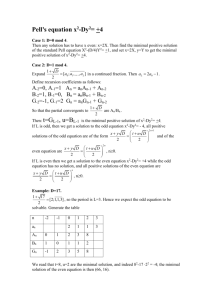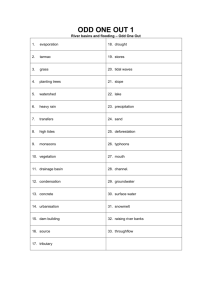Start 1 2 3 4 5 6 7 8 9 10 11 12 13 14 15 16 17 25 24
advertisement

odd one out Materials: Dice counters in two colours. A game for two players. Aim: To be the player with the most counters. Rules: Players take turns to roll a dice and move that many squares. If you land on an odd number place a counter in your opponent’s scorebox. 1 2 3 4 5 6 7 8 9 32 33 34 35 36 37 38 10 31 39 11 30 9 50 Finish 40 12 29 9 49 41 13 28 9 48 42 14 27 47 46 45 44 43 15 26 16 25 24 23 22 21 20 19 18 17 Start Scorebox: Player 1 Scorebox: Player 2 © PAUL SWAN www.drpaulswan.com.au odd one out Australian Curriculum Links Typically students explore odd and even numbers in Year 3 and 4. Prior to this they need to recognise odd and even numbers. This game is designed to help students recognise odd and even numbers. Specific links are: Yr 3: (ACMNA051). Investigate the conditions required for a number to be odd or even and identify odd and even numbers. Yr 4: (ACMNA071). Investigate and use the properties of odd and even numbers. Teachers’ notes An even number is any whole number that is divisible by two without leaving a remainder. This explains why 0 is an even number. Odd numbers are whole numbers that are not divisible by two without leaving a remainder, eg 1,3, 5, 7, 9 ... When students fill a ten frame using a pair-wise system then the distinction between odd and even numbers becomes clear. Odd numbers literally have a ‘bit sticking out’ as one one child told me. This is because one dimension is two units wide. Later, students may explore why adding two odd numbers results in an even number. When adding 5 and 7, students can see that by rotating the image and sliding them together there is ‘no bit sticking out’.







